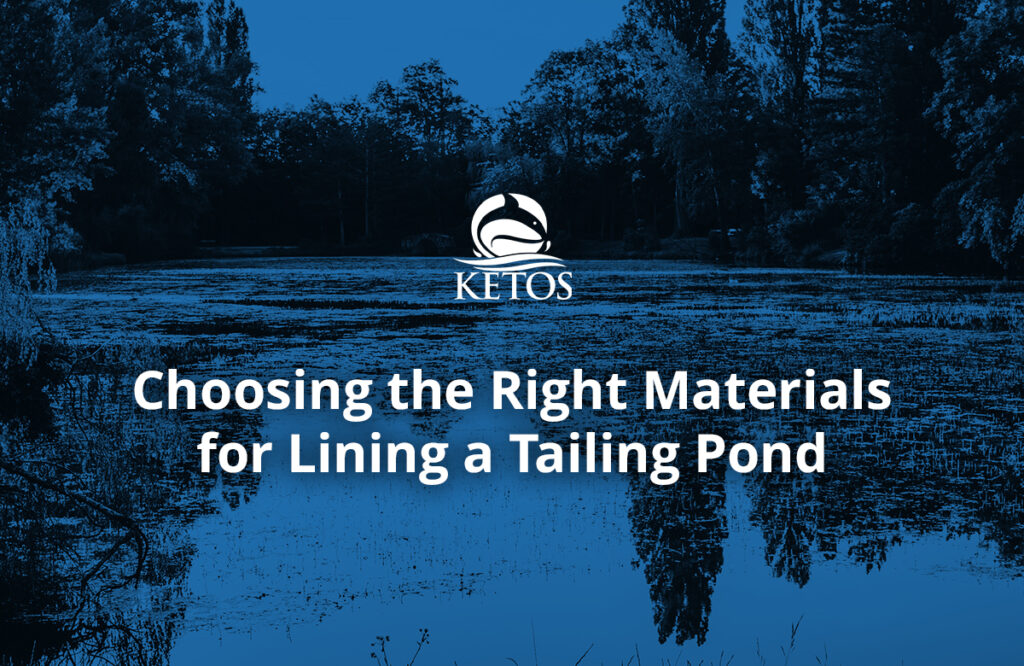Mining operations provide resources for many industries, but they can impact the environment, especially water quality in nearby areas. Settling ponds help reduce these impacts by acting as a water quality monitoring system. They capture harmful sediments, metals, and bacteria before the water flows into natural waterways. Testing water quality in these ponds, including checking for bacteria, is key to ensuring safe, sustainable mining practices.
Water Quality Monitoring and the Mining Industry
Maintaining high water quality is important for sustainable mining practices. Water quality monitoring in settling ponds helps detect pollutants that may affect the surrounding ecosystem. By using advanced water quality monitoring systems, like the KETOS SHIELD, mining operators can track changes in parameters like pH, turbidity, and levels of contaminants in real-time. This data provides valuable insights into the effectiveness of settling ponds and enables timely interventions to prevent environmental harm.
Effective water quality monitoring includes parameters such as:
- pH levels: pH is a measure of how acidic or alkaline the water is. It’s important to keep pH levels within a range that minimizes harm to aquatic organisms.
- Turbidity: High turbidity indicates suspended particles in water, which can negatively impact aquatic habitats.
- Heavy metals: Settling ponds often accumulate heavy metals such as lead, mercury, and cadmium, which must be monitored to prevent toxic releases.
- Bacteria levels: Testing water quality for bacteria is critical to ensure that the water is safe for downstream ecosystems.
How to Test Water Quality for Bacteria and Contaminants
Testing water quality for bacteria and contaminants in settling ponds involves a combination of manual sampling and automated monitoring systems. Bacterial testing typically uses water samples that are analyzed in a lab to detect coliform bacteria, a common indicator of contamination. Advanced water quality monitoring systems automate this process by providing real-time data on multiple water quality parameters.
To effectively test water quality in mining operations, operators should focus on:
- Sampling protocols: Establish consistent sampling protocols to ensure data accuracy over time.
- Testing frequency: Regular testing intervals help track changes in water quality and quickly address issues.
- Utilizing automated monitoring systems: Automated systems provide continuous data, reducing the need for frequent manual sampling.
Water Quality Monitoring Systems: An Effective Solution
Within the mining industry, water quality monitoring systems are used to provide continuous insights into water quality conditions. Modern systems, like KETOS SHIELD, automate water quality monitoring across multiple parameters using sensors, data analytics, and real-time reporting tools. These systems offer benefits such as:
- Real-time data: Immediate feedback allows operators to detect and respond to contamination quickly.
- Predictive analytics: By identifying trends, predictive models help operators prevent potential issues before they escalate.
- Reduced manual labor: Automated monitoring reduces the need for frequent manual testing, saving time and resources.
- Regulatory compliance: Continuous monitoring ensures that mining operations meet regulatory requirements.
Water quality monitoring systems are equipped with IoT sensors that measure parameters like dissolved oxygen, turbidity, and conductivity, which are crucial for understanding the impacts of mining activities on water quality. These sensors transmit data to centralized dashboards, allowing operators to make informed decisions based on real-time information.
4 Key Water Quality Monitoring Parameters for Mining Operations
In the context of sustainable mining, specific parameters are important for effective water quality management:
| Parameter | Description |
| Dissolved Oxygen (DO) | Indicates the amount of oxygen available for aquatic life. Low DO levels can harm aquatic organisms and signal poor water quality. |
| Biochemical Oxygen Demand (BOD) | Measures the amount of oxygen consumed by bacteria as they decompose organic matter. High BOD can indicate high levels of organic pollution. |
| Chemical Oxygen Demand (COD) | Reflects the total amount of chemicals in the water that consume oxygen, including both organic and inorganic substances. |
| pH | Measures the acidity or alkalinity of the water. Mining activities often affect pH, and monitoring it helps prevent harm to aquatic life. |
Using Settling Ponds to Protect the Environment Near Mining Sites
Settling ponds are a key part of mining operations designed to protect the environment. These ponds capture and hold runoff from mining activities, allowing harmful particles like sediment, metals, and bacteria to settle before the water flows back into nature. By filtering out these pollutants, settling ponds help keep surrounding water bodies cleaner and safer.
Settling ponds also help mining operations meet environmental regulations. By regularly testing water quality in these ponds, including checks for contaminants and bacteria, mining sites can make sure they are not harming nearby ecosystems. This process supports healthy water quality, prevents erosion, and helps protect aquatic life downstream, making settling ponds a vital tool for responsible mining.
How KETOS Supports Water Quality Monitoring
At KETOS, we provide mining operators with advanced, real-time water quality monitoring through our KETOS SHIELD and KETOS WAVE platforms. Our systems track over 30 critical parameters—such as heavy metals, bacteria, and turbidity—streamlining data collection and removing the need for manual sampling.
Our solutions deliver key benefits to mining operations:
- Automated Monitoring & Predictive Alerts: Our technology offers continuous data and real-time alerts, allowing operators to respond quickly to water quality changes.
- Cloud Integration & Compliance Support: With centralized data storage and reporting, KETOS helps ensure regulatory compliance and simplifies tracking.
Partnering with KETOS allows mining operations to enhance water management, safeguard surrounding ecosystems, and work towards sustainability goals with greater efficiency and accuracy.
See how KETOS can empower your mining operations for sustainable water management today. Discover how we have helped key players in the mining industry implement our innovative solutions to improve water quality parameters near their operations, or contact us to request a demo and experience our solutions firsthand.










